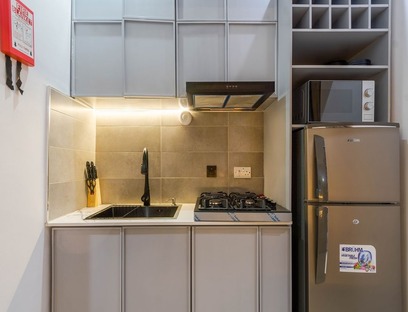A hotel's interior is its soul, expressing its personality and welcoming guests into its embrace.
Hotel interiors are more than just aesthetics; they are the silent storytellers of a brand, shaping the guest experience from the moment they step inside. From the grand lobby to the intimate guest rooms, every element – color, texture, lighting, and furniture – plays a crucial role in creating an ambiance that is both inviting and memorable.
The Power of Design:
- Setting the Tone: The hotel's overall design philosophy should reflect its brand identity. Is it a luxurious boutique hotel, a contemporary business hotel, or a family-friendly resort? The design choices should align with this brand positioning.
- Creating a Sense of Place: Incorporating local elements, whether it's through artwork, materials, or design motifs, can create a unique sense of place and enhance the guest experience.
- Enhancing Comfort and Functionality: Guest comfort is paramount. Furniture should be ergonomic and inviting, while the layout should maximize space and functionality.
- Elevating the Senses: The use of color, texture, and scent can significantly impact the guest's mood. Soft, calming colors can create a sense of tranquility, while vibrant hues can energize.
- Personalization: Offering guests the ability to personalize their stay through design choices, such as room upgrades or special amenities, can enhance their overall experience.
Key Design Elements:
- Lobby: The lobby is the first impression. It should be welcoming, spacious, and visually appealing. Comfortable seating, elegant lighting, and eye-catching artwork are essential.
- Guest Rooms: Comfort and functionality are key. The rooms should be well-lit, spacious, and equipped with modern amenities. Attention to detail, such as high-quality linens, plush pillows, and thoughtful amenities, can elevate the guest experience.
- Bathrooms: Bathrooms should be luxurious and functional. High-quality fixtures, ample counter space, and luxurious toiletries are essential.
- Public Spaces: Restaurants, bars, and lounges should have a distinct ambiance that complements the overall hotel design.
Trends in Hotel Interior Design:
- Sustainability: Eco-friendly materials, energy-efficient lighting, and a focus on reducing waste are increasingly important.
- Technology Integration: Seamless integration of technology, such as smart room controls and high-speed Wi-Fi, is crucial for today's travelers.
- Experiential Design: Creating unique and memorable experiences, such as themed rooms or interactive art installations, is becoming increasingly popular.
- Local Influences: Incorporating local art, crafts, and materials to create a unique sense of place.
Hotel interior design is an art form that requires a deep understanding of guest preferences, brand identity, and the latest design trends. By carefully considering every element, hoteliers can create spaces that are not only aesthetically pleasing but also functional, comfortable, and memorable, ultimately enhancing the guest experience and driving business success.


Comments (0)